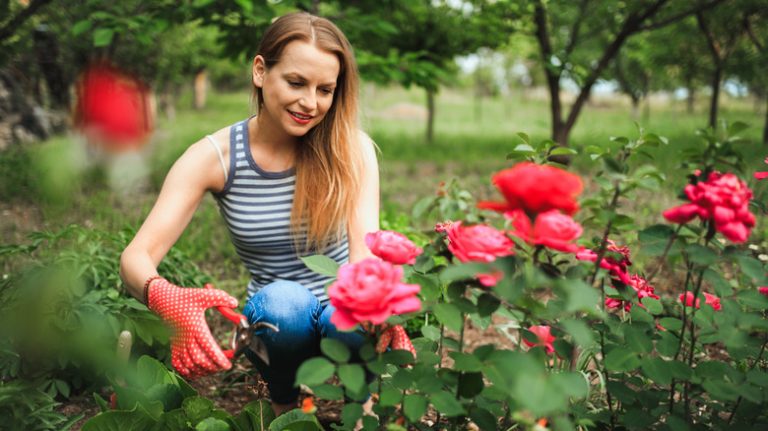Morning glory is the common name for the plants of the genus Ipomoea. This annual ornamental flower’s name comes from its tendency to open its blooms in the morning and close them later in the day, explains Gardener’s Path. It has been referred to widely in poetry, art, and literature. Great American poet Walt Whitman famously said of the flower, “A morning-glory at my window satisfies me more than the metaphysics of books.” Morning glories also carry with them themes of unrequited love and the bittersweet passing of time.
If you’re looking to incorporate morning glories into your garden, you’ll be pleased to know that there are many varieties to choose from that offer a dizzying array of colors, from orange to red, pink, and purple, as per Better Homes & Gardens. That being said, the most popular color is blue. You can also find morning glories in varying sizes. Some varieties grow to 3 feet in height, while others reach heights of 20 feet when fully mature. As a sprawling plant, its width also varies considerably, ranging from 5 to 20 feet wide.
A morning glory is a fantastic addition to any garden. It is deer-resistant while attracting birds and other wildlife. It is also a low-maintenance, easy-to-grow plant that rewards gardeners with blooms from the summer well into the fall. The following guide will teach you all you need to know about growing and caring for morning glories.
Where to plant morning glories in your garden
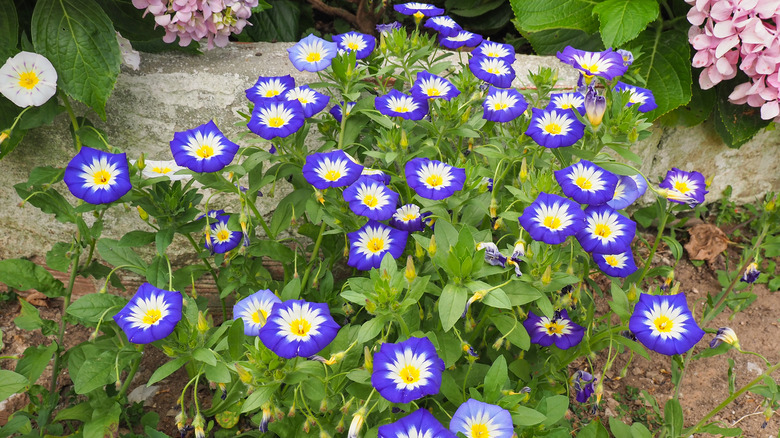
Morning glories are not picky plants and will thrive in many areas of your garden. Garden Design points out that this plant will sprawl and climb when left unchecked, making it perfect for covering chain-link fences, walls, and the sides of your house. It will also grow quickly up narrow structures, which makes it ideal for wrapping porch pillars and mailboxes. Its bright colors are great for disguising less-attractive areas of your yard, such as large swaths of empty land, or exterior air conditioning units. Not only does morning glory grow well when planted directly in the soil, it also thrives in pots and containers. Plant it in a hanging basket for a trailing vine effect, or in a large container with a trellis to add life and color to a deck or patio. Another benefit to growing it in containers is that you can move it around your yard as desired.
You’ll want to note that due to its tendency to grow heartily and invasively, morning glory should not be planted close to other perennial and annual plants, according to Gardening with Charlie Nardozzi. A better choice for a companion plant would be any evergreen, non-flowering shrub. The abundance of green foliage will pair nicely with the bright colors of the morning glory. For even more visual stimulation, consider growing different varieties of morning glory in the same location — the countless color combinations will delight any visitor to your home!
Morning glory varieties
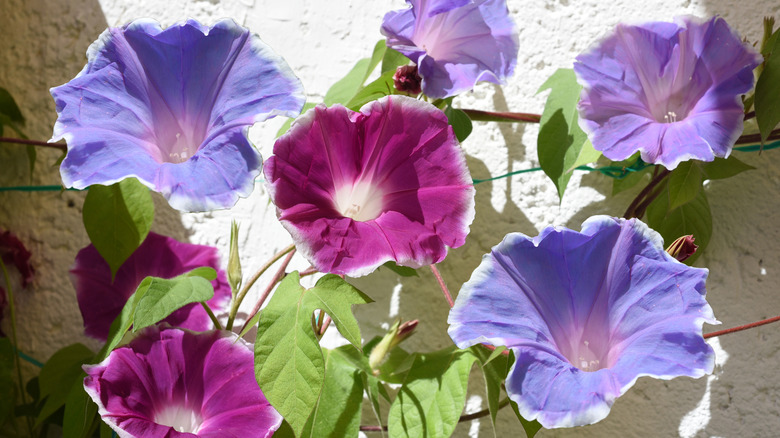
Morning glories (Genus Ipomoea) hail from the tropical regions of the current-day Americas, specifically Mexico and Central America, states Gardening Know How. There are now over 1,000 varieties of this annual flower that are grown around the world. The most common variety is known as Heavenly Blue, which stuns with its blue petals ranging from shades of azure blue to periwinkle. It reaches 10 feet when fully mature, and is a popular candidate for decorating fences and filling hanging baskets. Among the many varieties of morning glory to choose from are the following:
- Moonflower (Ipomoea alba) is great for anyone looking for a pure white morning glory that lets off a delicious scent. This is an exceptionally large variety, hitting heights of 15 feet.
- Cardinal Climber (Ipomoea x sloteri) features vivid red blooms that readily attract hummingbirds and butterflies. This variety is tall at 12 feet when fully grown, yet slender at just 1 foot in width.
- Grandpa Ott (Ipomoea nil) draws the eye with its vibrant purple blooms that feature a red interior. Boasted as one of the lowest-maintenance varieties, Grandpa Ott self-seeds and requires no pruning during the growing season.
- Mt. Fuji Mix (Ipomoea x imperialis) offers a truly eye-catching mixture of color with its red, purple, and blue blooms.
- Wedding Bells (Ipomoea tricolor) also feature multi-colored flowers in shades of pink and light purple and can grow up to 10 feet, as per Dave’s Garden.
When to plant morning glory flowers and how to do it
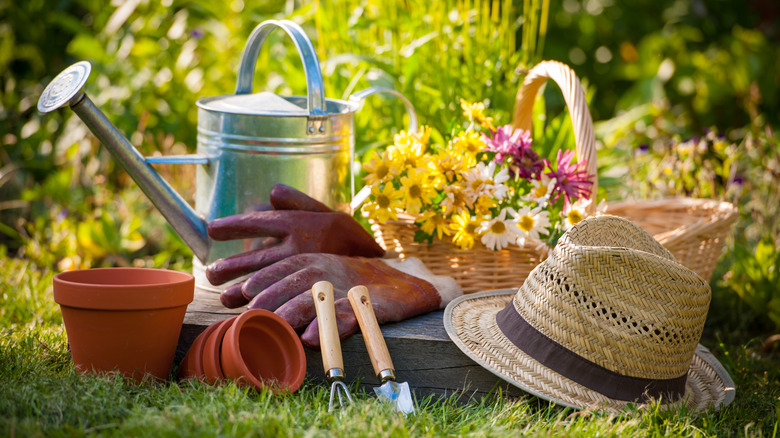
Alexander Raths/Shutterstock
While you can buy morning glory seedlings from your local plant nursery and transplant them into your garden, this plant grows easily from seeds, which has the benefit of saving you money, explains Planet Natural. When you purchase a packet of seeds, make sure you grab some organic compost for added nutrition when you plant your morning glories. You will also need climbing supports, a trowel, and a pair of gardening gloves to get the job done.
The ideal time to plant morning glory seeds is in the late spring, just after the threat of frost has completely passed for the season. For best results, scuff up the seeds a bit with a nail file and place them in a cup of water for a full day before planting them. Next, choose a spot in your garden and mix a bit of compost into the soil. You’ll then want to stick seeds a bit less than 1 inch into the ground. The eager seedlings will pop out from anywhere between one and three weeks after planting, as long as they are kept well-watered (but not overly soggy). Once the seedlings have emerged, you can pull out any weaker sprouts until there is about 1/2 a foot of space between the remaining ones. At this point, you’ll want to add the climbing supports into the soil to give your morning glories some direction as they continue growing.
How to care for morning glories
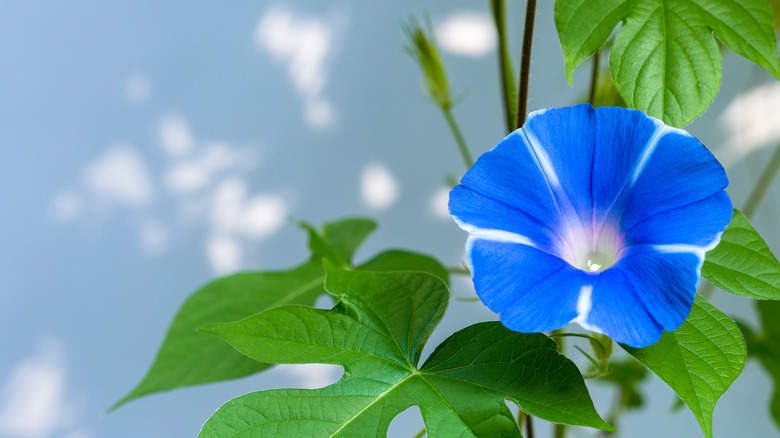
ruiruito/Shutterstock
Morning glories are easy to grow in many climates, but do have their ideal growing preferences. They will thrive in USDA hardiness zones 2 through 11 and prefer sunny and warm locations for their growing season, per The Spruce. When it comes to specific sunlight needs, you’ll want to ensure your morning glories receive a minimum of six hours of sunlight per day. This number can safely extend to eight hours, as long as they aren’t exposed to excessive heat. Direct sunlight in the morning will also allow this flower to fulfill its habit of stretching open with the awakening day and wilting later in the afternoon.
In addition to sunlight, morning glories need plenty of moisture during the growing season. If you are in a location with little to no summer rainfall, you should count on providing about 1 inch of water per week while the morning glories are in bloom. For added moisture retention, consider packing the base of the plant with some mulch. While moisture is certainly necessary, you will also need to take care that your morning glories aren’t sitting in overly-soaked soil to avoid fungal diseases and root rot. Before planting, it is wise to make sure your garden has well-draining soil. You may need to provide a low-nitrogen fertilizer during the growing season if you notice poor growth — supplying fertilizer once a month should be sufficient.
How to repot morning glory
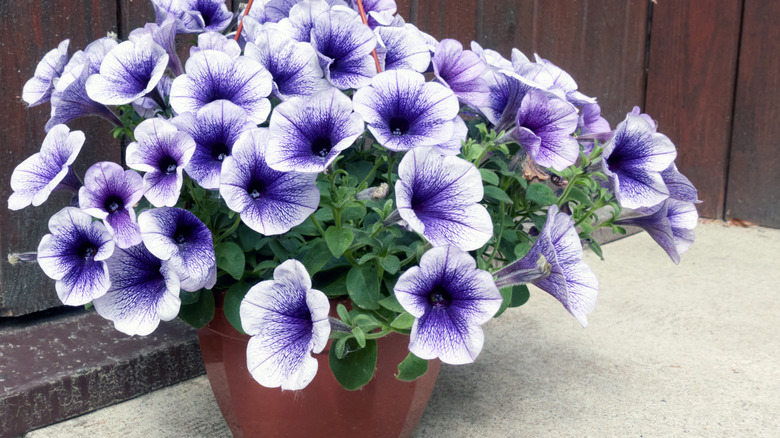
Jonas Vegele/Shutterstock
Planting morning glories in containers is a great way to prevent them from growing uncontrollably and overtaking your garden. Due to their tendency to climb and trail, this can also be an attractive way to decorate balconies and patios. That being said, containers can be restrictive and prevent morning glories from reaching their full potential. In this case, you will want to monitor the plant closely for signs that it needs an upgrade to a larger home. Penn State Extension points out some common signs that indicate it’s time for a new pot. You may notice that your morning glory’s roots have begun growing through the drainage holes at the base of the container. The soil may also dry out quickly after watering, which signals that the root-to-soil ratio is off.
If you’ve determined that your morning glory needs repotting, it is best to choose a new container that is two times the size of the current one, as per SFGate. Next, fill the pot with potting soil, leaving a couple of inches of space below the lip. You should also form a hole in the middle of the pot for the root ball. At this point, you’ll want to place a support structure into the container to allow your morning glory to climb as it grows. Once you’ve carefully removed the plant from its old pot, situate the root ball into the new container. Cover it with soil, and then water generously.
Morning glory pests and diseases
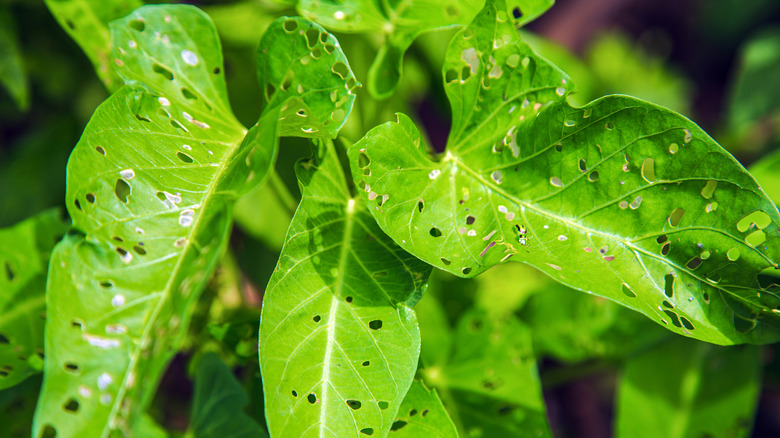
ET Tisomboon/Shutterstock
The most common morning glory pests are spider mites and aphids, both of which enjoy feasting on the plant’s foliage, per Garden Guides. Spider mites, in particular, suck the sap out of the leaves, causing them to turn yellow and fail to thrive. Aphids also feed on the sap within the leaves, in turn releasing a sticky substance known as honeydew. The presence of honeydew can cause secondary problems, including fungal infections. Both spider mites and aphids are hard to see with the naked eye until the effects of their feeding take over the plant. Once you notice an infestation, you should take immediate action to get rid of the pests. You can either introduce predatory insects that eat spider mites and aphids or use insecticides to treat the problem.
Gardening Know How outlines a few diseases that can afflict your morning glories as well. These diseases are typically fungal in nature and include rust and canker. The former causes a powdery substance to take over the backside of the leaves, resulting in an orange-yellow appearance. The canker fungus affects the leaves and stem of the plant, turning them brown and lifeless. In both cases, you’ll want to dispose of the infected parts of the plant to avoid further spread. There are also preventative measures you can take to keep your morning glories free from fungal diseases, namely avoiding overwatering. You should also take care to only water the soil and roots of the plant.
Is morning glory toxic?
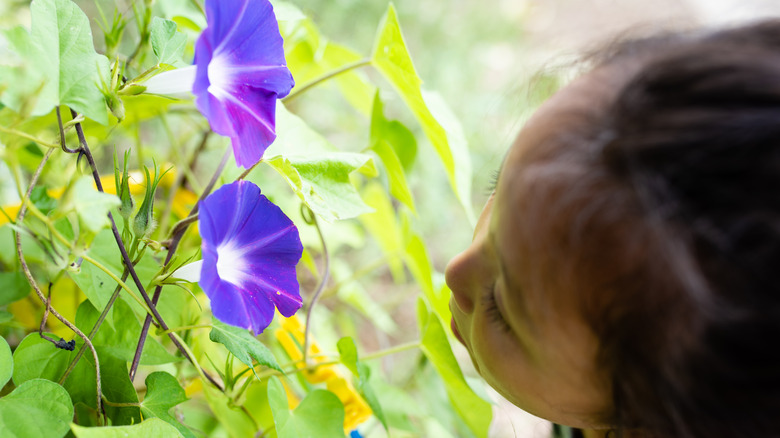
Purino/Shutterstock
The question of whether morning glories are toxic depends on the part of the plant. While the flowers, leaves, and vines are not toxic, the seeds are highly poisonous if accidentally ingested, according to National Capital Poison Center. This is due to the presence of a hallucinogenic substance within the seeds that causes effects similar to those of LSD. When consumed, this chemical can wreak havoc on the gastrointestinal system, leading to significant digestive distress in the form of vomiting and diarrhea. It can also cause a person to experience hallucinations. In excessive quantities, the seeds can lead to even more dangerous symptoms. If you or someone in your family has accidentally eaten morning glory seeds, contact your local poison control helpline or emergency hospital for immediate medical attention.
It should be noted that the ASPCA also marks morning glories as toxic to cats, horses, and dogs. Ingestion by animals can cause the same symptoms as seen in people and also requires emergency medical care. While you should certainly take care not to leave morning glory seeds in areas easily accessible to small children and pets, this plant is relatively safe once actively growing in your garden. However, it is always best to teach your children and pets to stay away from morning glories to avoid any accidents. Growing them in hanging baskets or in areas of your yard that can be blocked off are easy ways to prevent access.

